Experimental and Numerical Study on the Elimination of Severe Slugging by Riser Outlet Choking
Abstract
1. Introduction
2. Experimental Design
2.1. Test Loop
2.2. Measurement Techniques
3. OLGA Model
3.1. Pipeline Riser Model
3.2. Fluids PVT Description
3.3. Boundary Conditions
4. Result and Discussion
4.1. Experimental Results
4.1.1. Pressure Cycling Characteristics
4.1.2. Liquid Production
4.1.3. Liquid Holdup
4.2. Simulation Results and Comparisons
4.2.1. Riser Base Pressure Cycling Characteristics
4.2.2. Liquid Production Characteristics
4.2.3. Liquid Holdup
5. Conclusions
Author Contributions
Funding
Data Availability Statement
Acknowledgments
Conflicts of Interest
References
- Sunday, N.; Settar, A.; Chetehouna, K.; Gascoin, N. An overview of flow assurance heat management systems in subsea flowlines. Energies 2021, 14, 458. [Google Scholar] [CrossRef]
- Pedersen, S.; Jahanshahi, E.; Yang, Z.Y.; Skogestad, S. Comparison of model-based control solutions for severe riser-induced slugs. Energies 2017, 10, 2014. [Google Scholar] [CrossRef]
- Jung, S.; Yang, H.; Park, K.; Seo, Y.; Seong, W. Monitoring severe slugging in pipeline-riser system using accelerometers for application in early recognition. Sensors 2019, 19, 3930. [Google Scholar] [CrossRef] [PubMed]
- Taitel, Y.; Vierkandt, S.; Shoham, O.; Brill, J.P. Severe slugging in a riser system: Experiments and modeling. Int. J. Multiph. Flow 2017, 16, 57–68. [Google Scholar] [CrossRef]
- Pots, B.F.M.; Bromilow, I.G.; Konijn, M.J. Severe slug flow in offshore flowline/riser systems. SPE Prod. Eng. 1987, 2, 319–324. [Google Scholar] [CrossRef]
- Sarica, C.; Shoham, O. A simplified transient model for pipeline-riser systems. Chem. Eng. Sci. 1991, 46, 2167–2179. [Google Scholar] [CrossRef]
- Ali, S.F.; Yeung, H. Experimental investigation and numerical simulation of two-phase flow in a large-diameter horizontal flow line vertical riser. Pet. Sci. Technol 2010, 28, 1079–1095. [Google Scholar] [CrossRef]
- Luo, X.; He, L.; Ma, H. Flow pattern and pressure fluctuation of severe slugging in pipeline-riser system. Chin. J. Chem. Eng. 2011, 19, 26–32. [Google Scholar] [CrossRef]
- Malekzadeh, R.; Henkes, R.A.W.M.; Mudde, R.F. Severe slugging in a long pipeline-riser system: Experiments and predictions. Int. J. Multiph. Flow 2012, 46, 9–21. [Google Scholar] [CrossRef]
- Tin, V. Severe slugging in flexible riser. In Proceedings of the 5th International Conference on Multiphase Production, Cannes, France, 1–3 June 1991. [Google Scholar]
- Montgomery, J.A. Severe Slugging and Unstable Flows in an S-Shaped Riser. Ph.D. Thesis, Cranfield University, Cranfield, UK, 2002. [Google Scholar]
- Li, N.L.; Guo, L.J.; Li, W.S. Gas–liquid two-phase flow regimes in a pipeline–riser system with an S-shaped riser. Int. J. Multiph. Flow 2013, 55, 1–10. [Google Scholar] [CrossRef]
- Zhou, H.; Guo, L.; Yan, H.; Kuang, S. Investigation and prediction of severe slugging frequency in pipeline-riser systems. Chem. Eng. Sci. 2018, 184, 72–84. [Google Scholar] [CrossRef]
- Ren, W. Analysis of flow characteristics and influencing factors of severe slugging flow in an underwater pipe-catenary riser. Chem. Technol. Fuels Oils 2021, 57, 828–840. [Google Scholar] [CrossRef]
- Reda, A.M.; Forbes, G.L.; Sultan, I.A. Characterisation of slug flow conditions in pipelines for fatigue analysis. In Proceedings of the International Conference on Offshore Mechanics and Arctic Engineering, ASME 30th International Conference on Ocean, Offshore and Arctic Engineering, Rotterdam, The Netherlands, 19–24 June 2011; pp. 535–547. [Google Scholar]
- Sultan, I.A.; Reda, A.M.; Forbes, G.L. Evaluation of slug flow-induced flexural loading in pipelines using a surrogate model. J. Offshore Mech. Arct. Eng. Trans. ASME 2013, 135, 031703. [Google Scholar] [CrossRef]
- Reda, A.M.; Forbes, G.L.; McKee, K.K.; Howard, I.M. Vibration of a curved subsea pipeline due to internal slug flow. In Proceedings of the 43rd International Congress on Noise Control Engineering, Melbourne, Australia, 16–19 November 2014; pp. 1–15. [Google Scholar]
- Reda, A.M.; Forbes, G.L.; Sultan, I.A.; Howard, I.M. Pipeline slug flow dynamic load characterization. J. Offshore Mech. Arct. Eng. Trans. ASME 2018, 141, 011701. [Google Scholar] [CrossRef]
- Wang, Y.H.; Chen, N.Z. An investigation on vortex-induced vibration of a flexible riser transporting severe slugging. Ocean Eng. 2022, 246, 110565. [Google Scholar] [CrossRef]
- Fabre, J.; Peresson, L.; Corteville, J.; Bernicot, M.; Ozon, P. Severe slugging in pipeline/riser systems. SPE Prod. Eng. 1990, 5, 299–305. [Google Scholar] [CrossRef]
- Rogachev, M.K.; Van, T.N.; Aleksandrov, A.N. Technology for preventing the wax deposit formation in gas-lift wells at offshore oil and gas fields in Vietnam. Energies 2021, 14, 5016. [Google Scholar] [CrossRef]
- Jansen, F.E.; Shoham, O.; Taitel, Y. The elimination of severe slugging: Experiments and modeling. Int. J. Multiph. Flow 1996, 22, 1055–1072. [Google Scholar] [CrossRef]
- Schmidt, Z.; Doty, D.R.; Dutta-Roy, K. Severe slugging in offshore pipeline-riser pipe system. SPE J. 1985, 25, 27–38. [Google Scholar] [CrossRef]
- Xie, C.; Guo, L.J.; Li, W.S.; Zhou, H.L.; Zou, S.F. The influence of backpressure on severe slugging in multiphase flow pipeline-riser systems. Chem. Eng. Sci. 2017, 163, 68–82. [Google Scholar] [CrossRef]
- Cheng, B.; Li, Q.P.; Yu, X.C.; Yao, H.Y. Software simulation for making severe slugging control strategy in deepwater riser. In Proceedings of the 33rd ASME International Conference on Ocean, Offshore and Arctic Engineerin, San Francisco, CA, USA, 8–13 June 2014. [Google Scholar]
- Liu, Y.T.; Zhu, X.X.; Song, J.P.; Wu, H.Y.; Zhang, S.F.; Zhang, S.M. Research on bypass pigging in offshore riser system to mitigate severe slugging. Ocean Eng. 2022, 246, 110606. [Google Scholar] [CrossRef]
- Inok, J.; Lao, L.; Cao, Y.; Whidborn, J. Severe slug mitigation in an S-shape pipeline-riser system by an injectable venturi. Chem. Eng. Res. Des. 2019, 150, 299–310. [Google Scholar] [CrossRef]
- Yao, T.; Wu, Q.H.; Liu, Z.G.; Zou, S.F.; Xu, Q.; Guo, L.J. Experimental investigation on mitigation of severe slugging in pipeline-riser system by quasi-plane helical pipe device. Exp. Therm. Fluid Sci. 2019, 102, 189–204. [Google Scholar] [CrossRef]
- Mokhatab, S. Severe slugging in a catenary-shaped riser: Experimental and simulation studies. Pet. Sci. Technol. 2007, 25, 719–740. [Google Scholar] [CrossRef]
- Taitel, Y. Stability of severe slugging. Int. J. Multiph. Flow 1986, 12, 203–217. [Google Scholar] [CrossRef]
- Bendiksen, K.; Brandt, L.; Fuchs, P.; Linga, H.; Malnes, D.; Moe, R. Two-phase flow research at SINTEF and IFE: Some experimental results and a demonstration of the dynamic two-phase flow simulator OLGA. In Proceedings of the 7th International Offshore Northern Seas Conference, Stavanger, Norway, 26–29 August 1986. [Google Scholar]
- Farghaly, M.A. Study of severe slugging in real offshore pipeline riser-pipe system. In Proceedings of the 5th Middle East Oil Show, SPE of AIME, Manama, Bahrain, 26–30 April 1987. [Google Scholar]
- Yeung, H.; Tchambak, E.; Montgomery, J. Simulating the behaviour of an S-shaped riser. In Proceedings of the 11th International Conference Multiphase, San Remo, Italy, 11–13 June 2003. [Google Scholar]
- Park, K.H.; Kim, T.W.; Kim, Y.J.; Lee, N.; Seo, Y. Experimental investigation of model-based IMC control of severe slugging. J. Pet. Sci. Eng. 2021, 204, 108732. [Google Scholar] [CrossRef]
- de Azevedo, G.R.; Balino, J.L.; Andreolli, I. Stability analysis for severe slugging including self-lifting. SPE J. 2021, 26, 716–736. [Google Scholar] [CrossRef]
- Choi, J.; Pereyra, E.; Sarica, C.; Park, C.; Kang, J.M. An efficient drift-flux closure relationship to estimate liquid holdups of gas-liquid two-phase flow in pipes. Energies 2012, 5, 5294–5306. [Google Scholar] [CrossRef]
- Bendiksen, K.H.; Malnes, D.; Moe, R.; Nuland, S. The dynamic two-fluid model OLGA: Theory and application. SPE Prod. Eng. 1991, 58, 171–180. [Google Scholar] [CrossRef]
- Peng, D.Y.; Robinson, D.B. A new two-constant equation of state. Ind. Eng. Chem. Fund. 1976, 15, 58–64. [Google Scholar] [CrossRef]
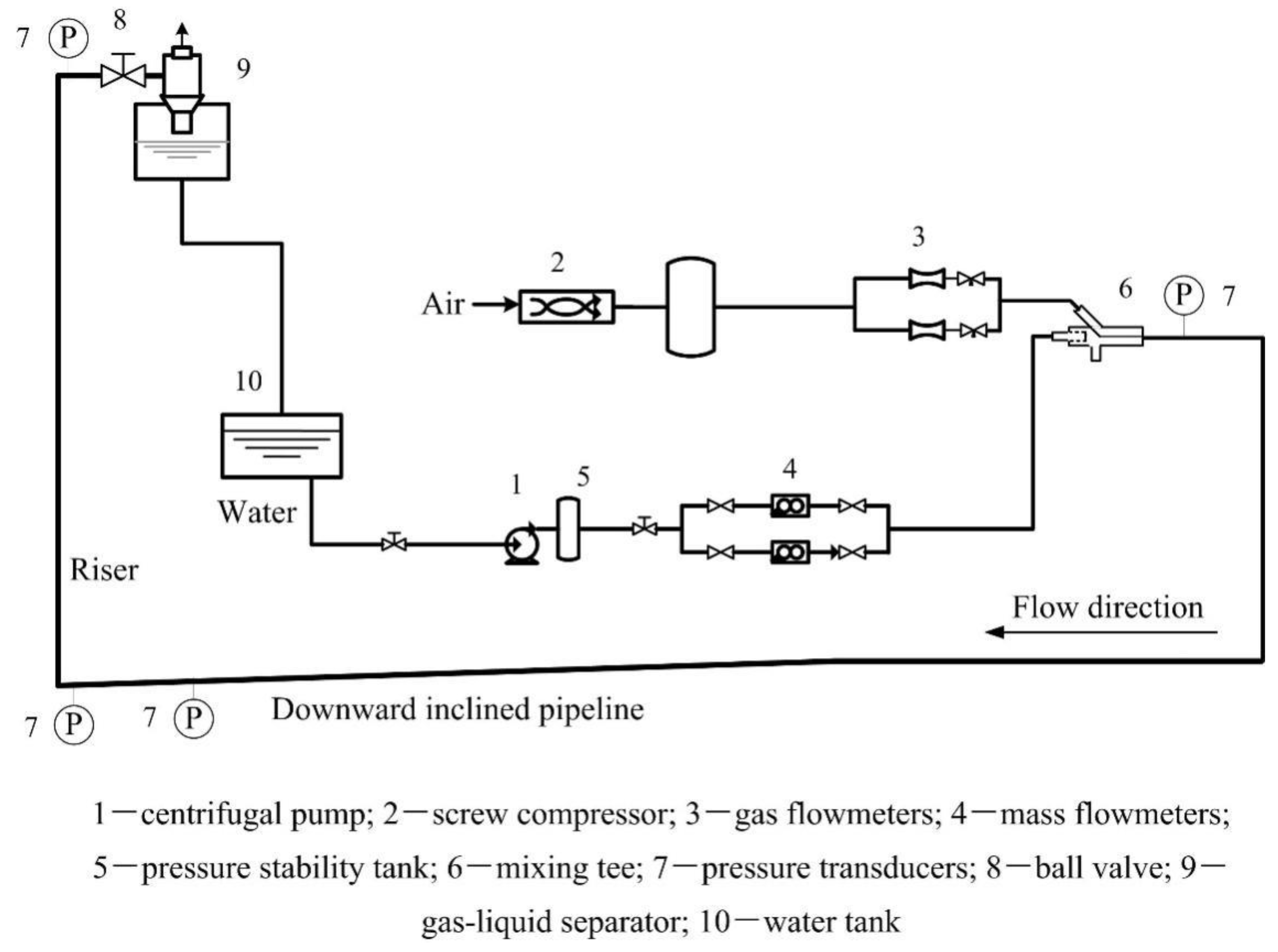
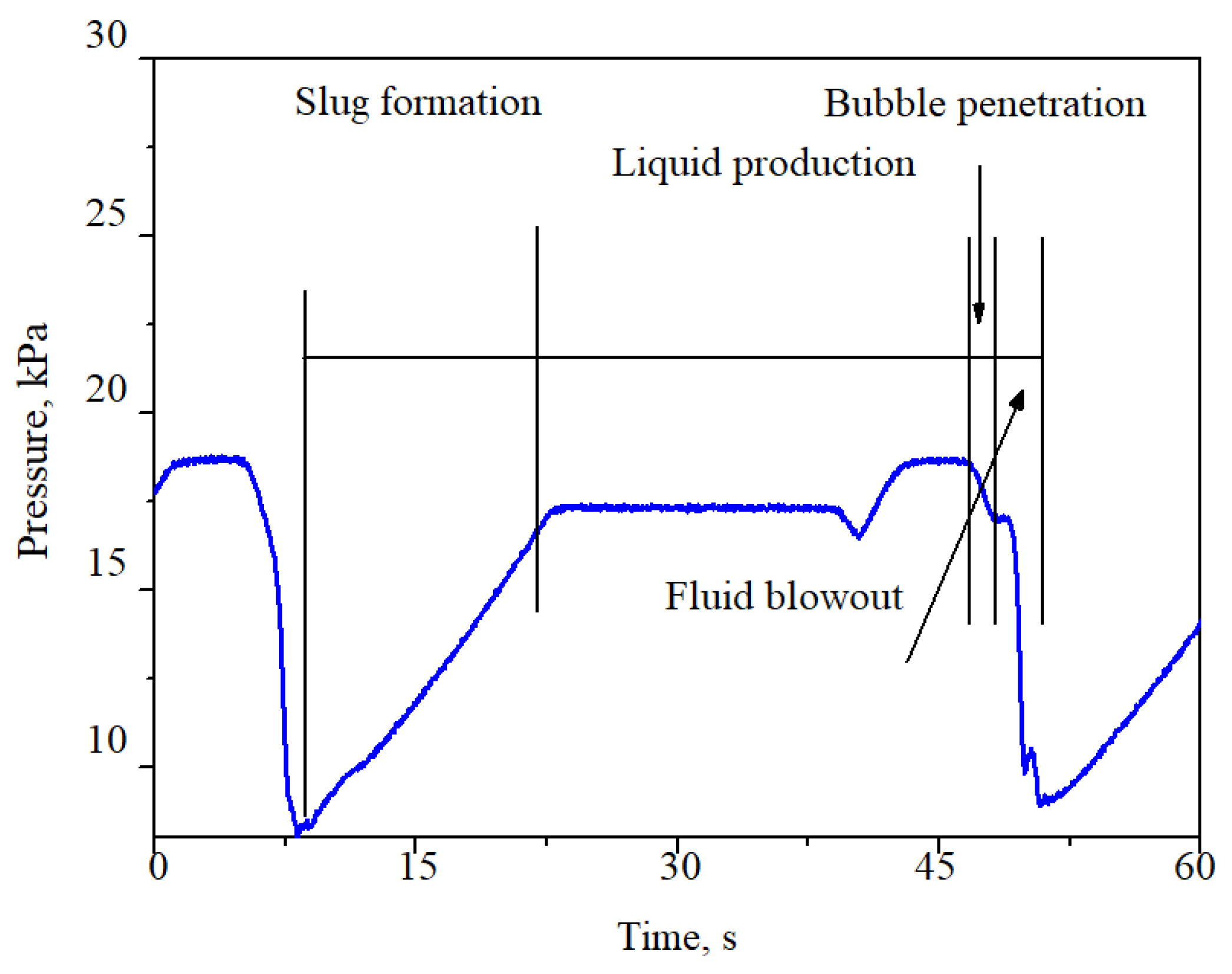
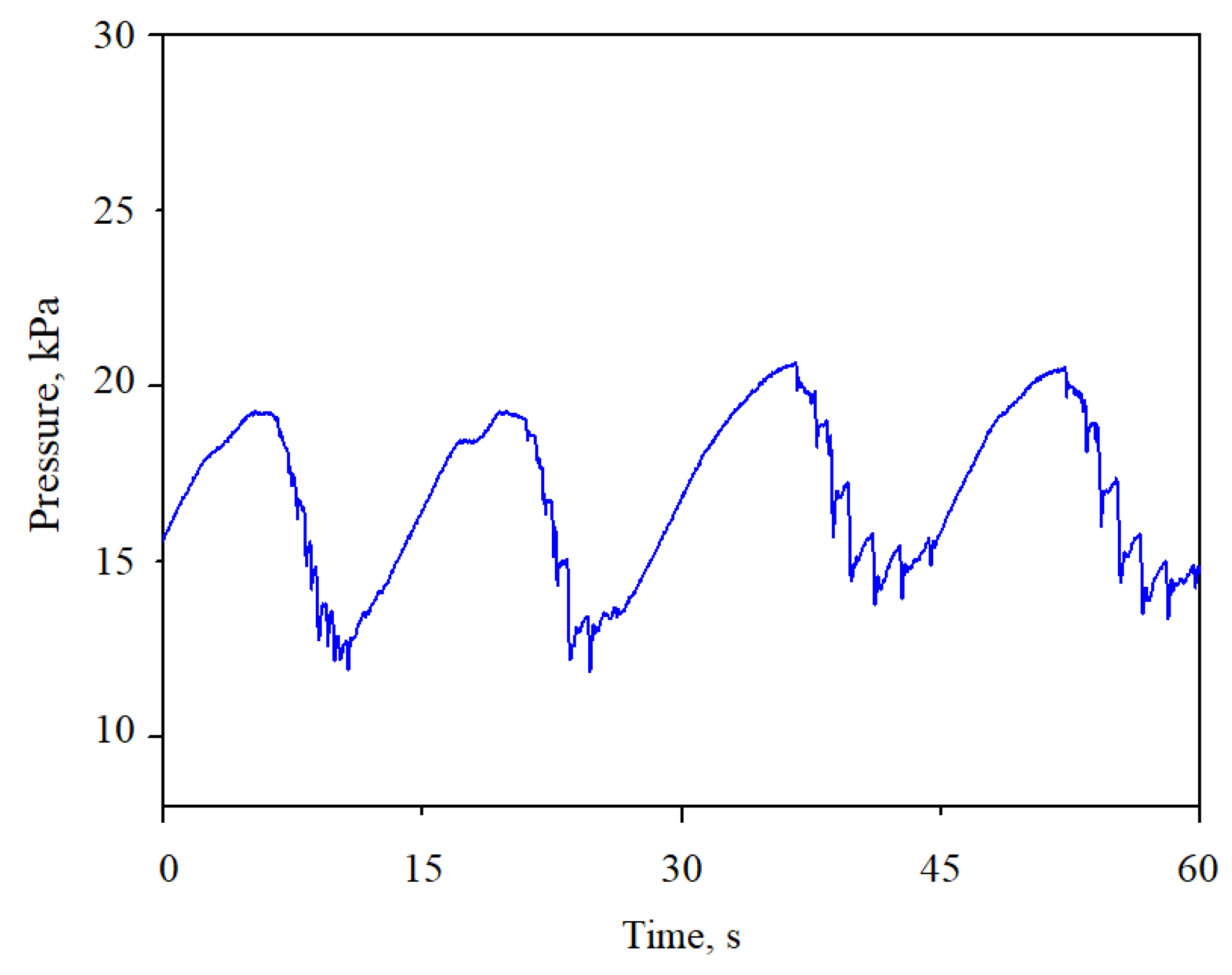
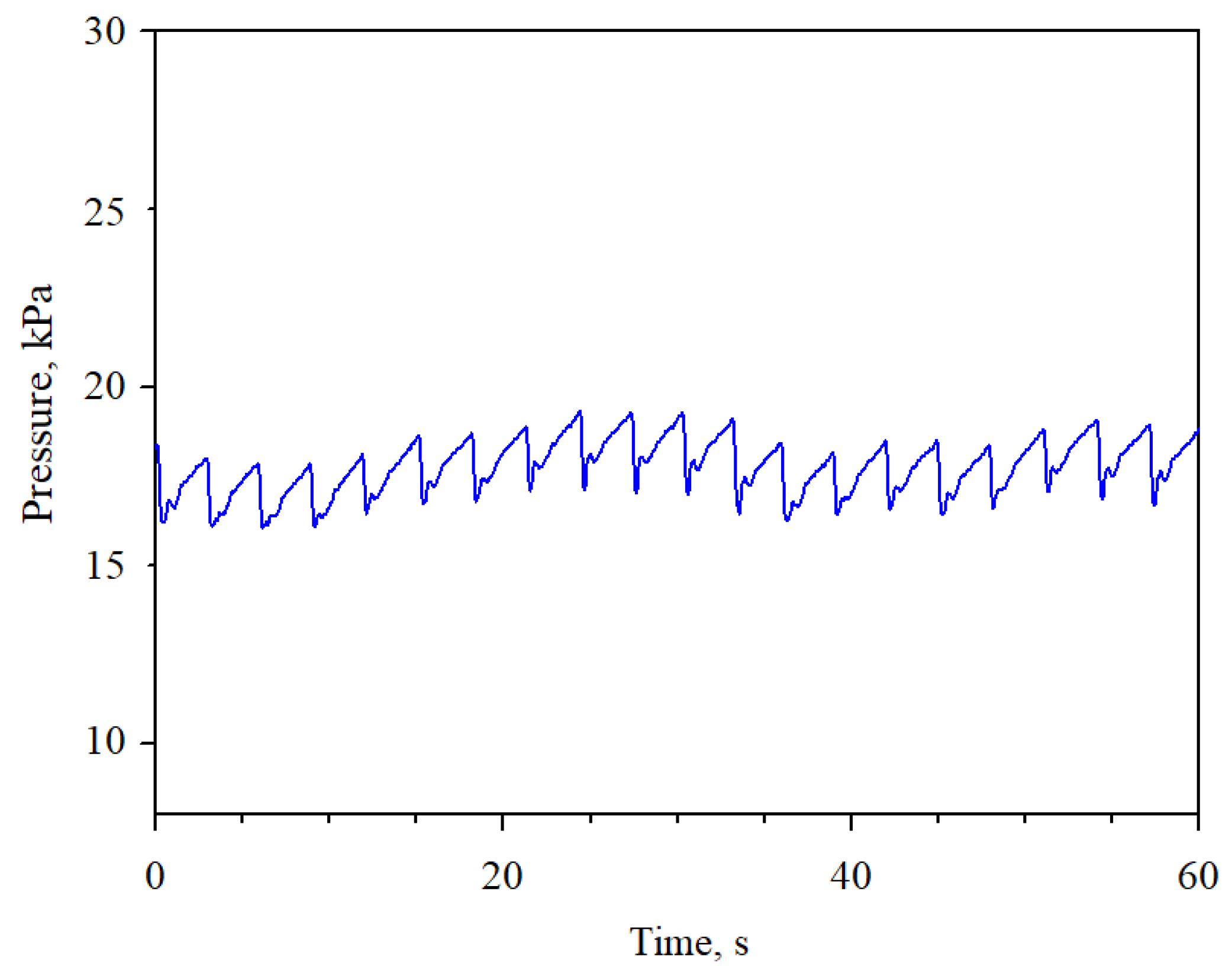



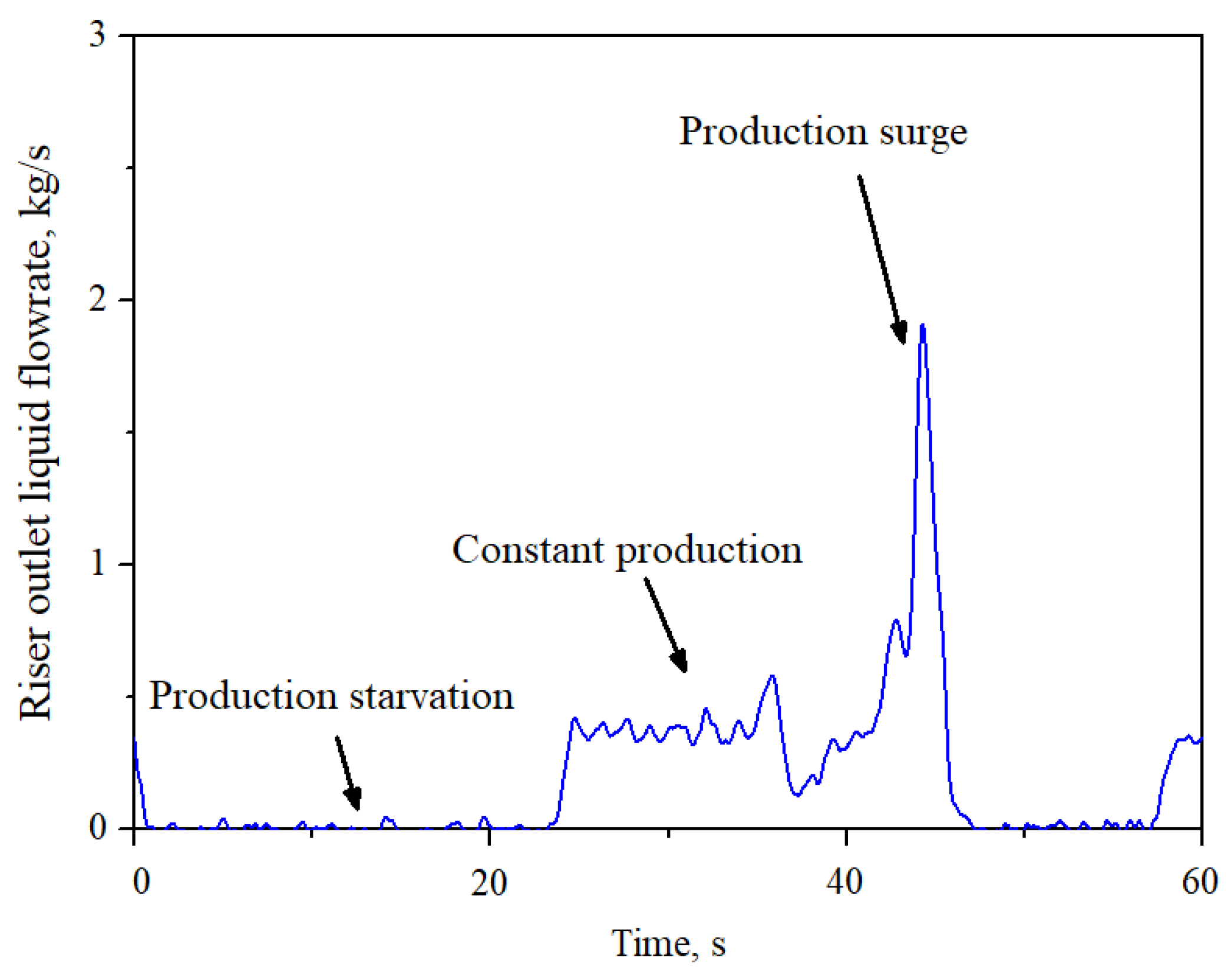
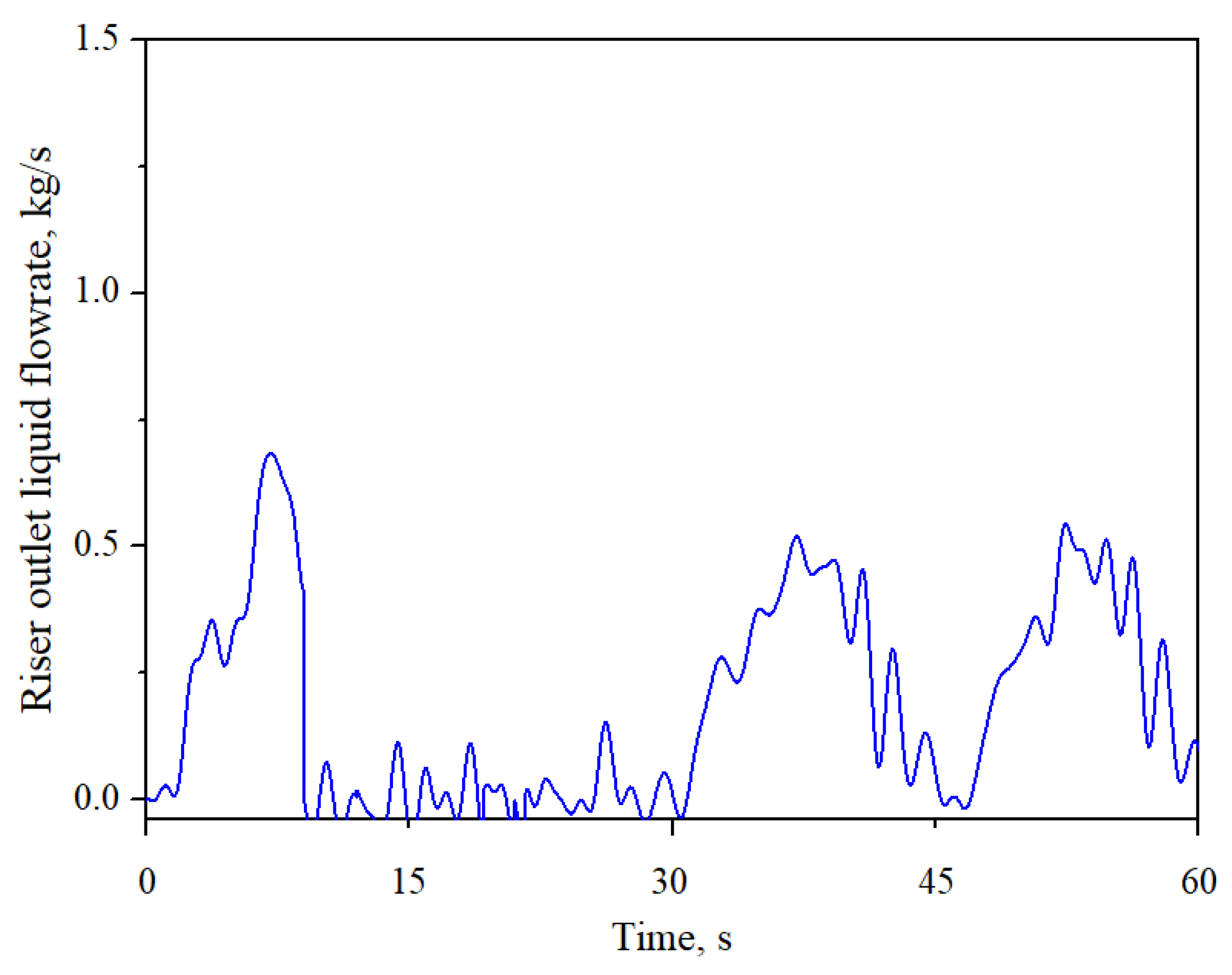
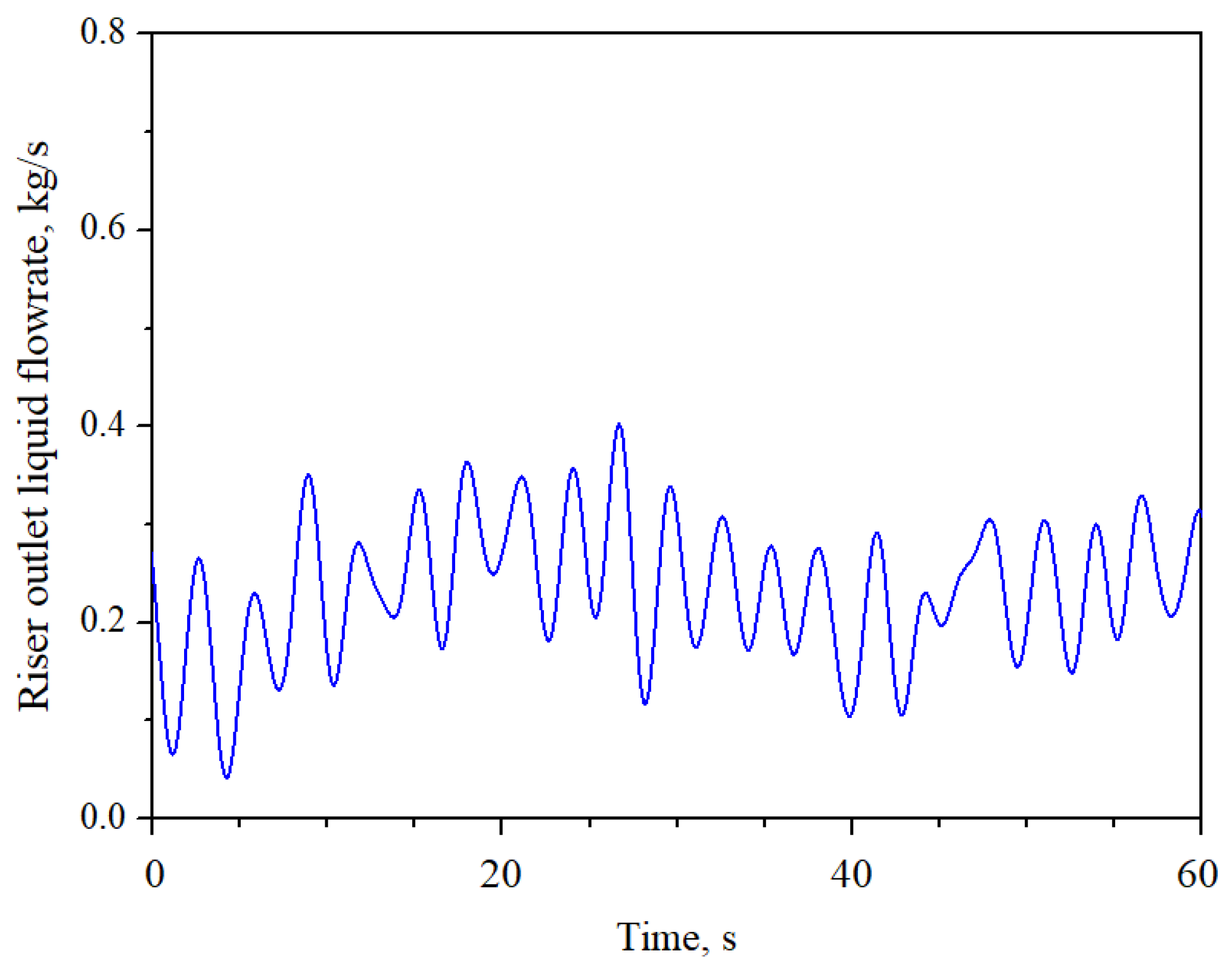
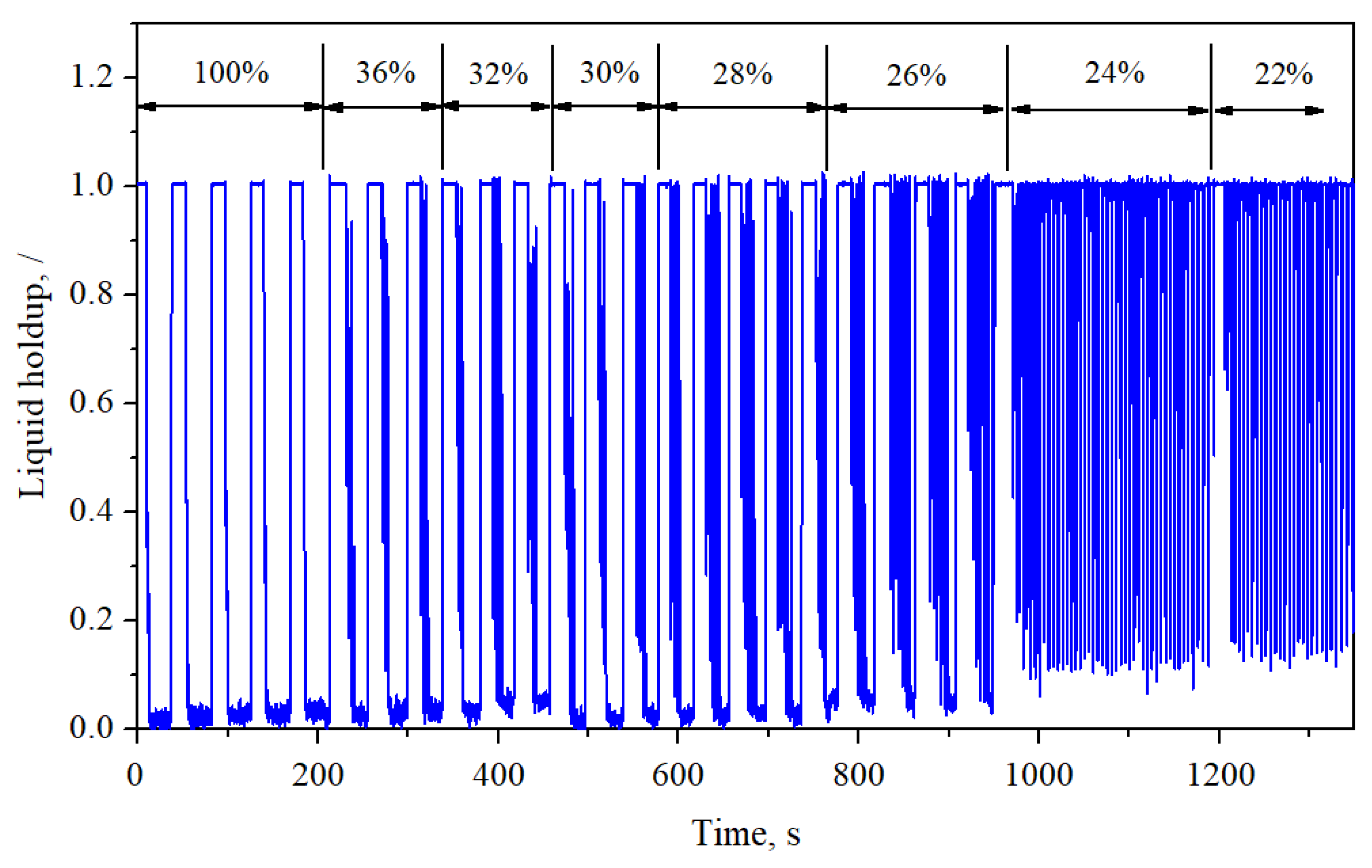
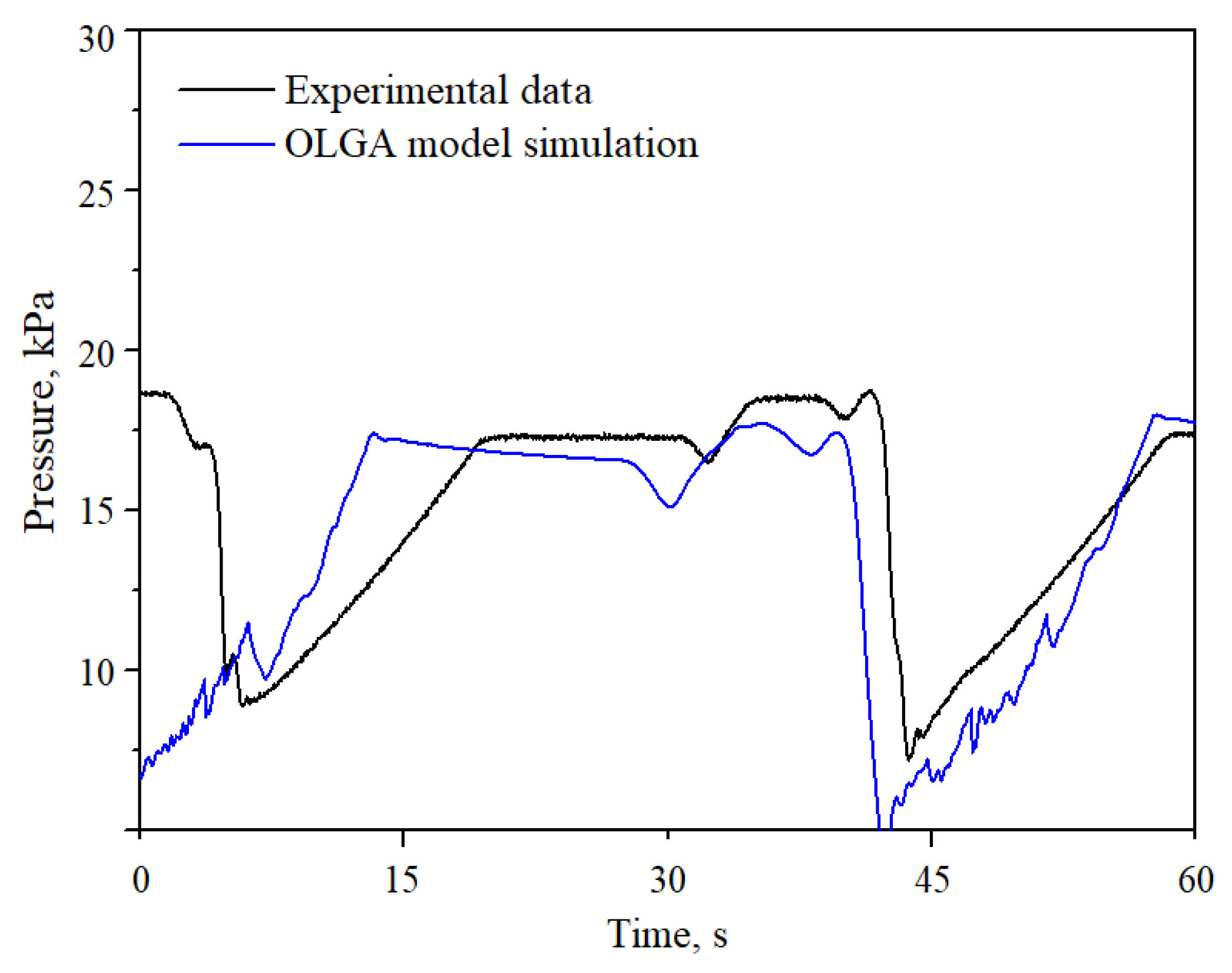
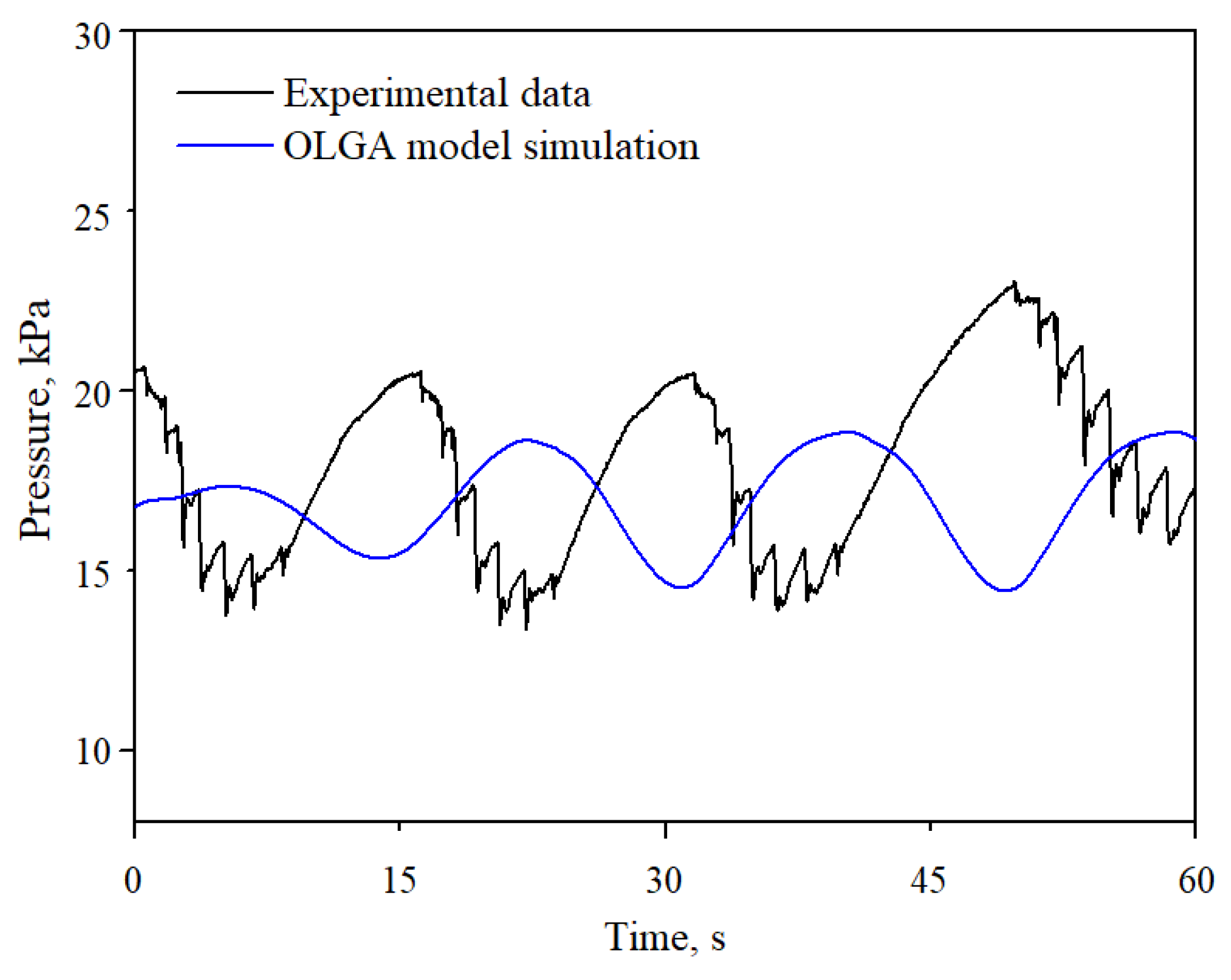


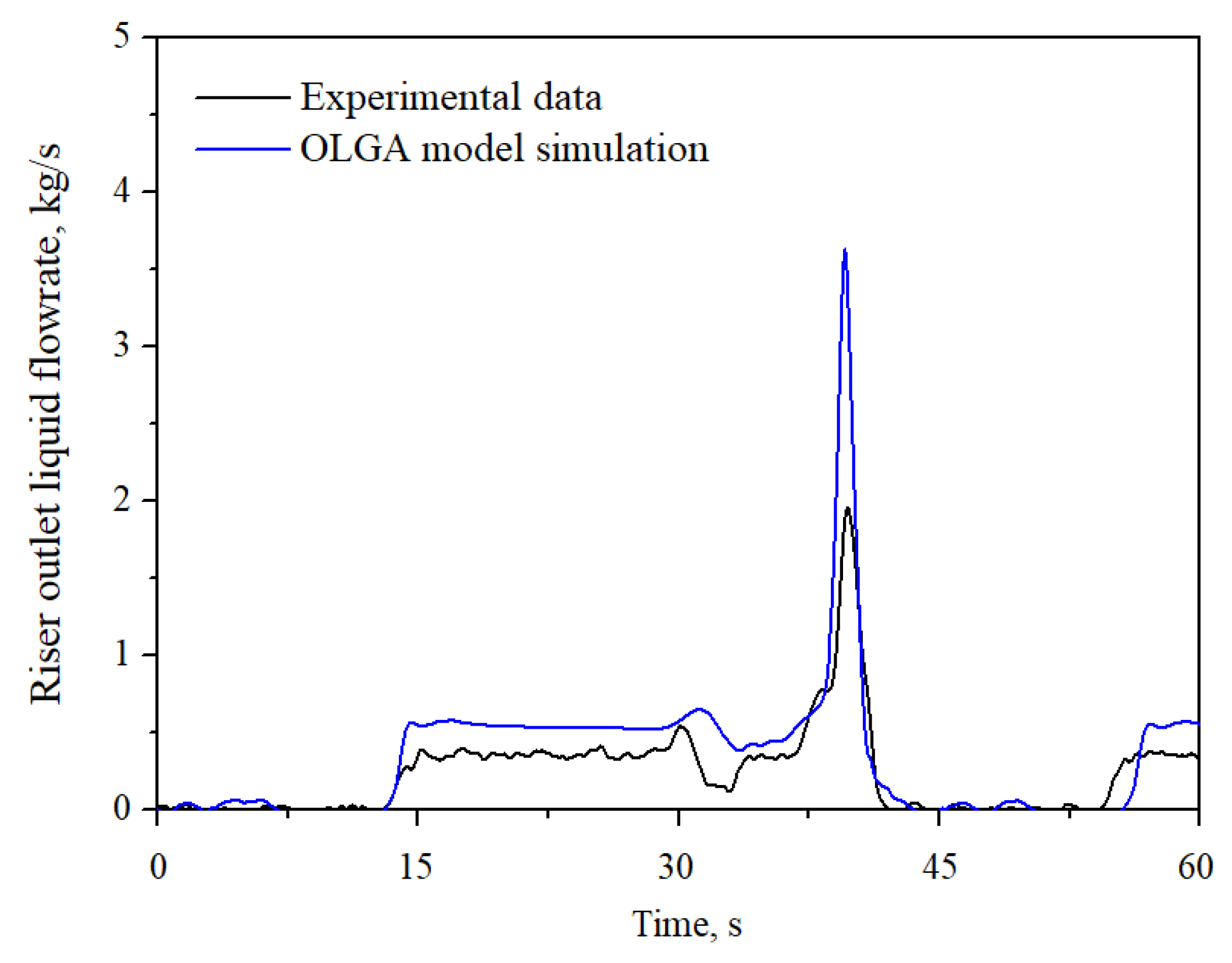
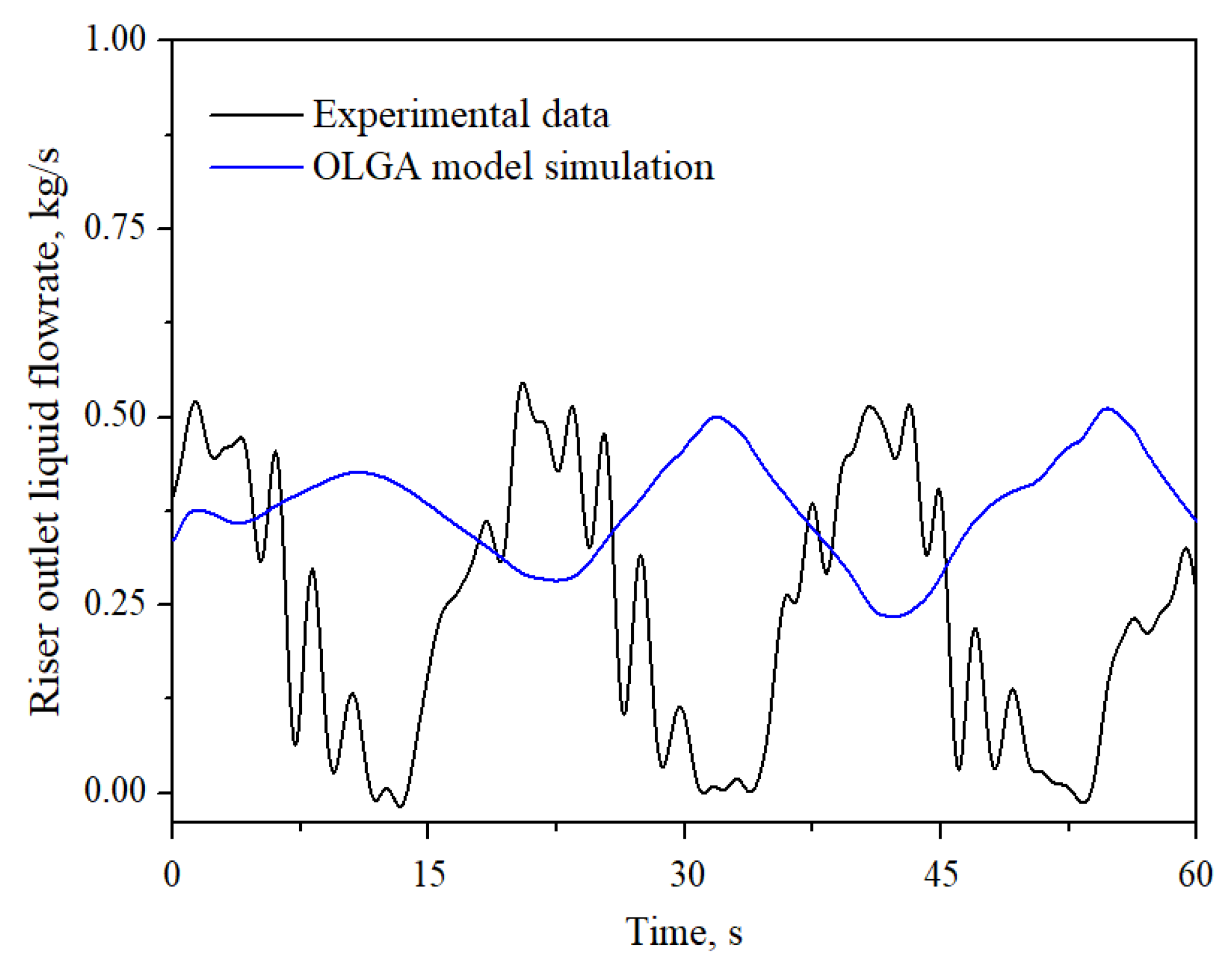
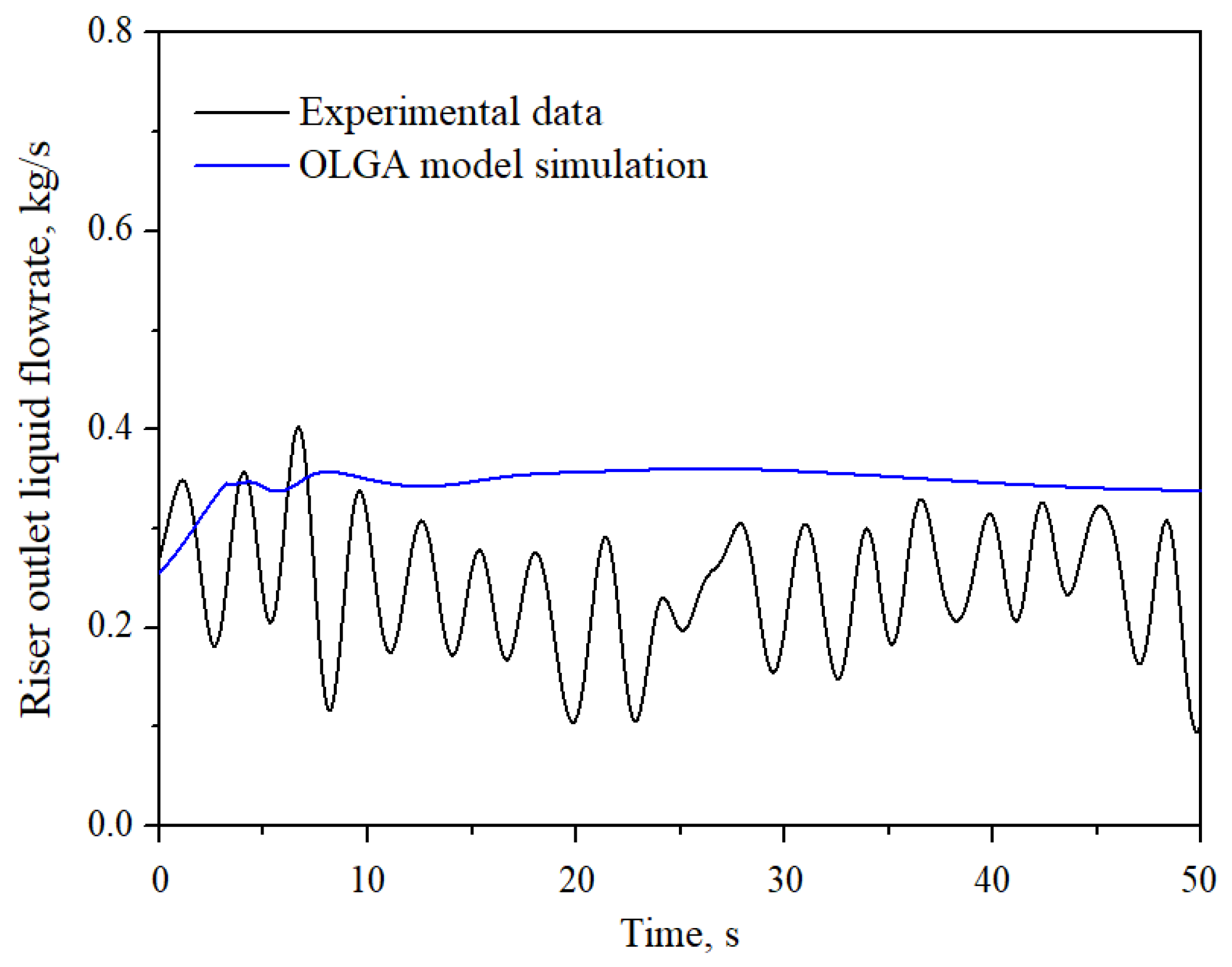
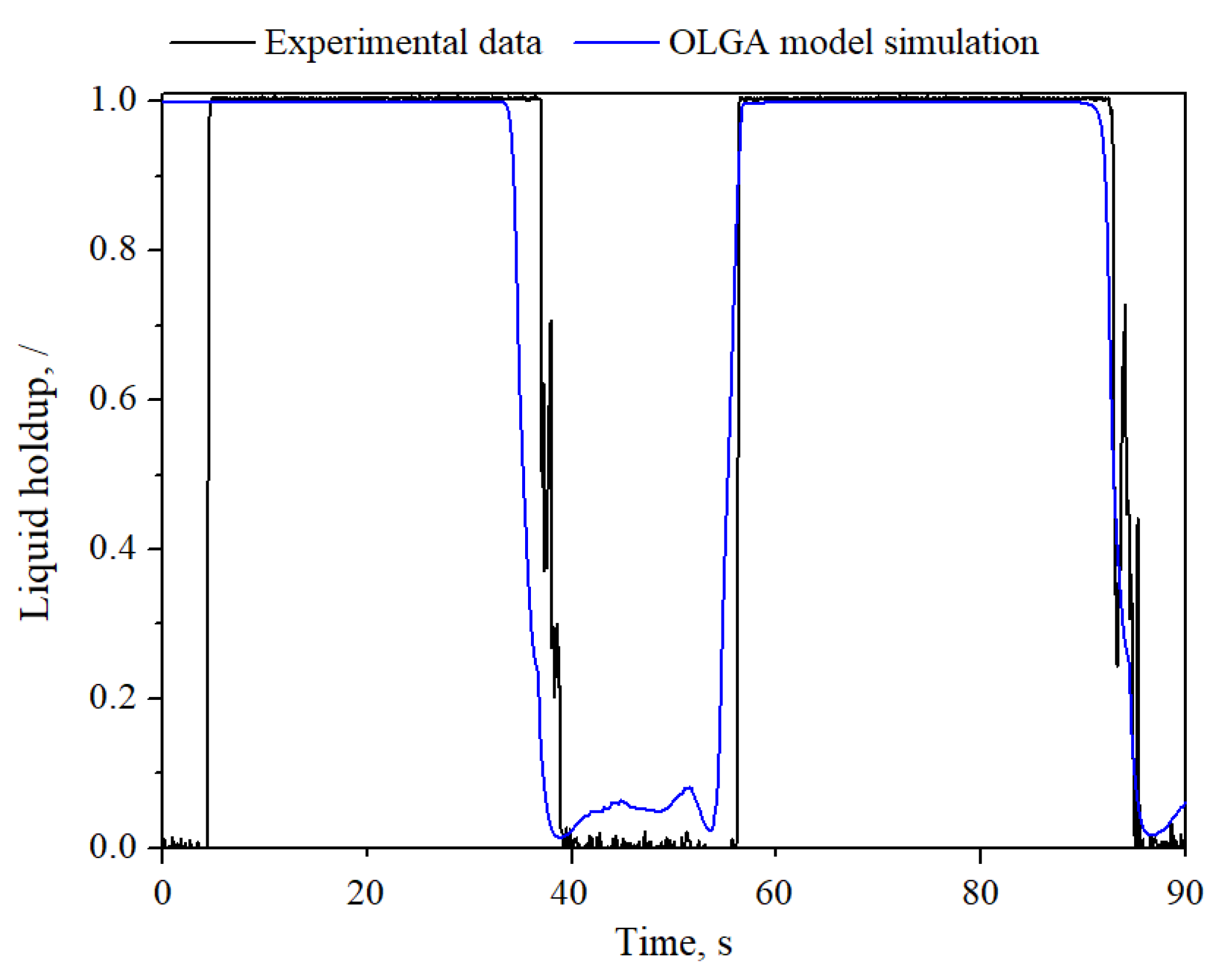
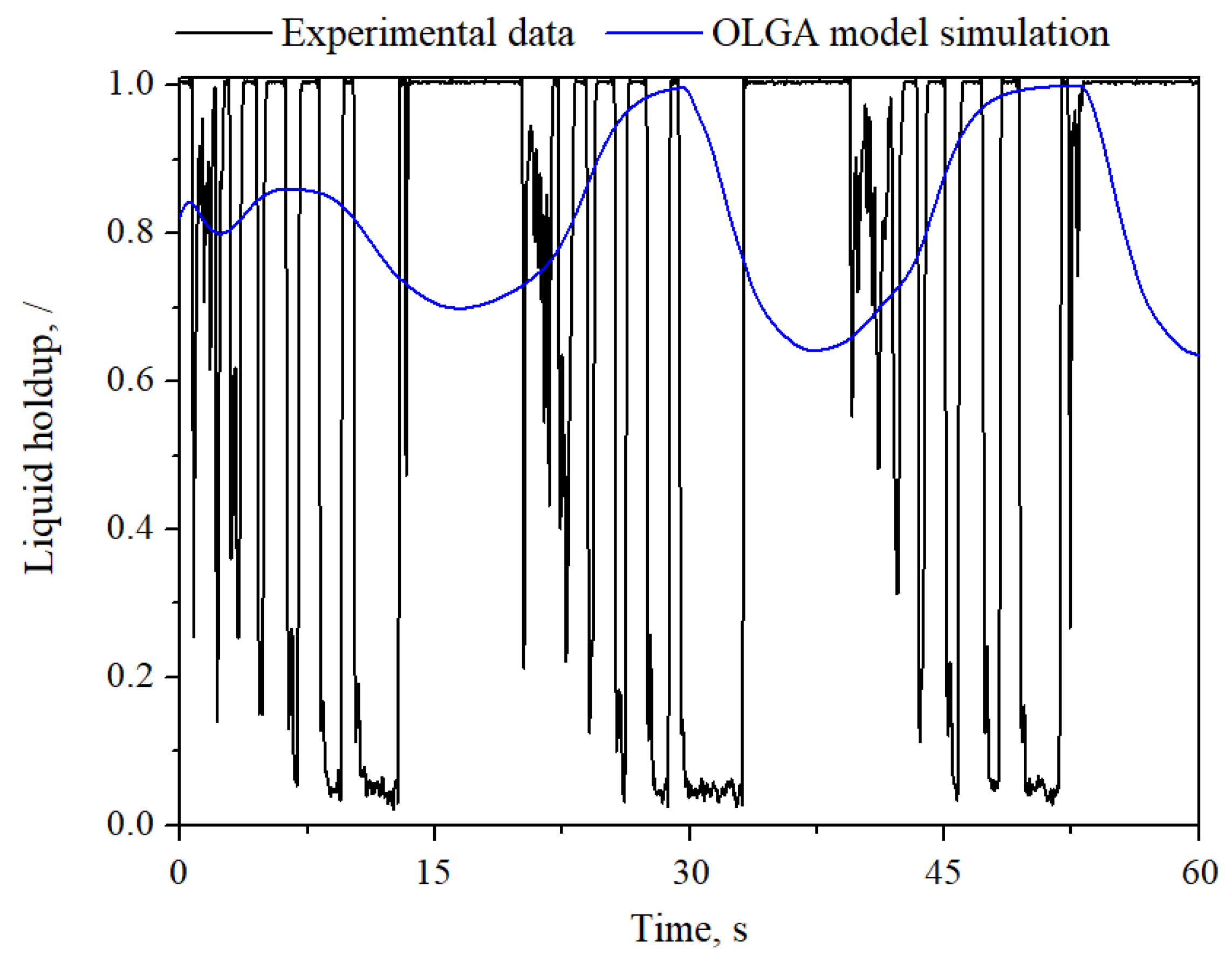

| Parameter | Value | Unit |
|---|---|---|
| Diameter | 50.8 | mm |
| Density | 7899 | kg·m−3 |
| Capacity | 499 | J·(kg·K)−1 |
| Conductivity | 50 | W·(m·K)−1 |
| Thickness | 9.99 | mm |
| Roughness | 0.099 | mm |
Publisher’s Note: MDPI stays neutral with regard to jurisdictional claims in published maps and institutional affiliations. |
© 2022 by the authors. Licensee MDPI, Basel, Switzerland. This article is an open access article distributed under the terms and conditions of the Creative Commons Attribution (CC BY) license (https://creativecommons.org/licenses/by/4.0/).
Share and Cite
Li, N.; Chen, B.; Du, X.; Han, D. Experimental and Numerical Study on the Elimination of Severe Slugging by Riser Outlet Choking. Energies 2022, 15, 7284. https://doi.org/10.3390/en15197284
Li N, Chen B, Du X, Han D. Experimental and Numerical Study on the Elimination of Severe Slugging by Riser Outlet Choking. Energies. 2022; 15(19):7284. https://doi.org/10.3390/en15197284
Chicago/Turabian StyleLi, Nailiang, Bin Chen, Xueping Du, and Dongtai Han. 2022. "Experimental and Numerical Study on the Elimination of Severe Slugging by Riser Outlet Choking" Energies 15, no. 19: 7284. https://doi.org/10.3390/en15197284
APA StyleLi, N., Chen, B., Du, X., & Han, D. (2022). Experimental and Numerical Study on the Elimination of Severe Slugging by Riser Outlet Choking. Energies, 15(19), 7284. https://doi.org/10.3390/en15197284






